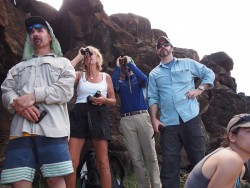Kapuaiwa Coconut Grove Access
DHHL News Release
The kupuna of Kalamaula made it clear to Department of Hawaiian Home Lands (DHHL) that Kapuaiwa Coconut Grove is sacred and not a place for recreation. Following community meetings, it was decided that this significant wahipana (historic site) needed to be better cared for and protected.
DHHL consulted the State Historic Preservation Division of the Department of Land and Natural Resources because the agency has jurisdiction over historic sites and obtained authorization to clean and fence Kapuaiwa. DHHL requests beneficiaries and members of the general public to respect the sacredness of Kapuaiwa while efforts are ongoing to work with the Department of Agriculture to continue diagnose/monitor the health of the trees so future decisions may be made about their well-being.…













